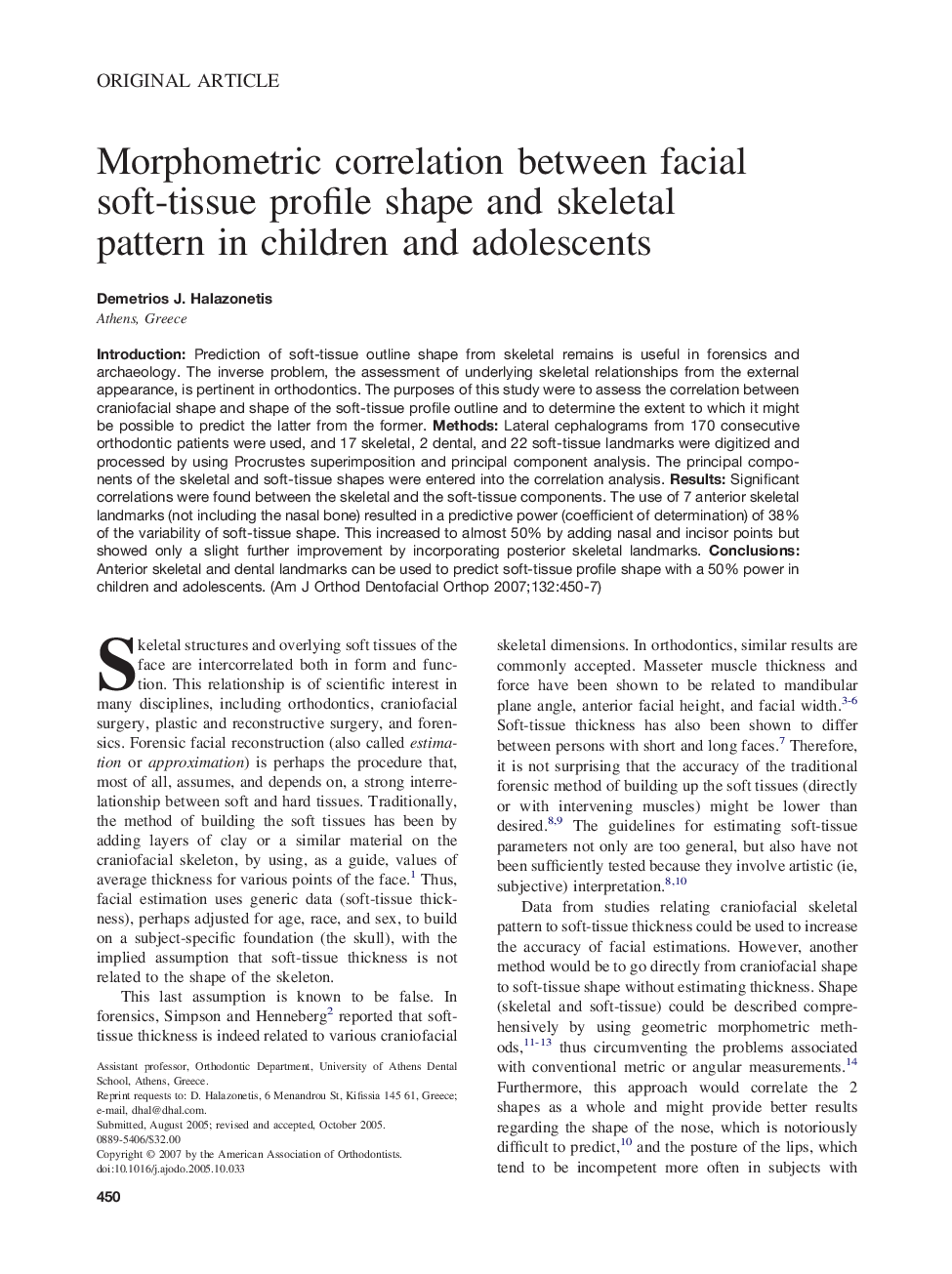| Article ID | Journal | Published Year | Pages | File Type |
|---|---|---|---|---|
| 3119794 | American Journal of Orthodontics and Dentofacial Orthopedics | 2007 | 8 Pages |
Introduction: Prediction of soft-tissue outline shape from skeletal remains is useful in forensics and archaeology. The inverse problem, the assessment of underlying skeletal relationships from the external appearance, is pertinent in orthodontics. The purposes of this study were to assess the correlation between craniofacial shape and shape of the soft-tissue profile outline and to determine the extent to which it might be possible to predict the latter from the former. Methods: Lateral cephalograms from 170 consecutive orthodontic patients were used, and 17 skeletal, 2 dental, and 22 soft-tissue landmarks were digitized and processed by using Procrustes superimposition and principal component analysis. The principal components of the skeletal and soft-tissue shapes were entered into the correlation analysis. Results: Significant correlations were found between the skeletal and the soft-tissue components. The use of 7 anterior skeletal landmarks (not including the nasal bone) resulted in a predictive power (coefficient of determination) of 38% of the variability of soft-tissue shape. This increased to almost 50% by adding nasal and incisor points but showed only a slight further improvement by incorporating posterior skeletal landmarks. Conclusions: Anterior skeletal and dental landmarks can be used to predict soft-tissue profile shape with a 50% power in children and adolescents.
